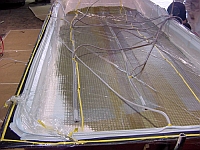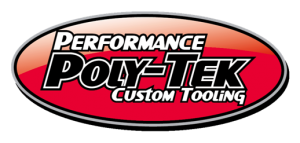 Vacuum Infusion defines a process where atmospheric pressure is used to facilitate the infusion of resin into a dry stack of reinforcement and core material. Fiberglass is laid dry into the mold and the vacuum is applied before resin is introduced. Once a complete vacuum is achieved, resin is sucked into the fiberglass via carefully placed tubing.
Vacuum Infusion defines a process where atmospheric pressure is used to facilitate the infusion of resin into a dry stack of reinforcement and core material. Fiberglass is laid dry into the mold and the vacuum is applied before resin is introduced. Once a complete vacuum is achieved, resin is sucked into the fiberglass via carefully placed tubing.
Contrary to resin transfer molding, vacuum infusion is achieved using the vacuum bagging method.
Vacuum bag moulding is a process using a two-sided mould set that shapes both surfaces of the panel. On the lower side is a rigid mould and on the upper side is a flexible membrane or vacuum bag. The flexible membrane can be a reusable silicone material or an extruded polymer film. Then, vacuum is applied to the mould cavity. This process can be performed at either ambient or elevated temperature with ambient atmospheric pressure acting upon the vacuum bag.
Vacuum bagging offers high resin/fiber ratios and high-volume production. It is the preferred method for large product designs like boat hulls and other products demanding strength and structural integrity for extreme use.

